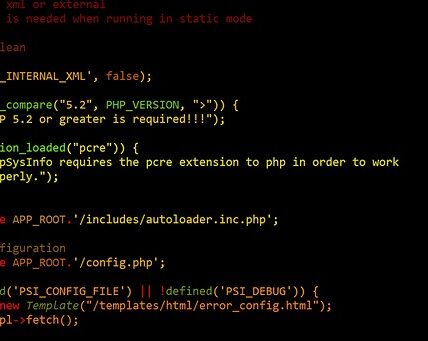The development of React Native libraries has been rising at a rapid pace, allowing developers to create mobile applications more quickly and efficiently than ever before. But what makes certain React Native libraries so popular and useful? How do developers decide what libraries to use? And which libraries offer the best tools for mobile development?
Mobile development has seen an explosion of new tools and libraries in the past few years. However, development teams are often overwhelmed by the sheer number of options available to them. This can often lead to poor decisions and missed opportunities when choosing a library, which can result in wasted time and resources. A deeper understanding of the most popular and useful React Native libraries may help developers make informed decisions about which library to use in their own projects.
Research into the most popular and useful React Native libraries has shown that certain features are highly sought-after by developers. These features include live reloading, state management, integration with existing applications, UI/UX tools, testing support, and version control. While there are many libraries offering these features, some offer a greater range of tools than others.
In this article, you will learn about the most popular and useful React Native libraries available. Along with the features that each library offers, you will find reviews of the libraries from developers who have used them in production. By understanding the features of each library and comparing them to the needs of your project, you should be able to confidently select the best tool for your mobile development tasks.
Definitions
React Native is a powerful library meant to help developers create native mobile applications for both iOS and Android platforms. It allows developers to write code in one language and compile it into the specialized language for both the platforms. This can significantly reduce the development time for mobile applications and can be used across a wide range of industries.
The most popular and useful React Native libraries are those that provide views, API integration, user inputs, navigation, animation, and more. For example, there are libraries available for native components, navigation frameworks, style sheets, state management, layout support, debugging, and many other categories.
Many of these libraries are designed to help with writing React Native code that is easier to read and understand, while also providing helpful tools for optimizing and improving the performance of applications. They can also provide solutions to common application issues such as updating user interfaces, data fetching, and navigation.
The usefulness of the available React Native libraries is determined by the extent to which they reduce the time and effort required to develop an application and provide guidance related to app design and development. These libraries can provide helpful tools such as code snippets, optimization strategies, testing suites, and debugging methods.
It can be difficult to determine which React Native libraries are the best for a given task, so it’s important to research and evaluate the different options available. By understanding the features and capabilities of each library, developers can determine which library is the best suited for their specific project.
React Navigation
React Navigation
React Navigation is one of the most popular and useful React Native libraries available, allowing developers to easily create robust and versatile mobile applications. Its ease of use and versatility make it a favorite among developers across the globe. React Navigation uses a modular architecture for creating different types of navigations, using a single code base for all mobile platforms including iOS and Android.
Benefits of React Navigation
One of the biggest benefits React Navigation offers mobile developers is that it eliminates the need to create separate navigation stacks for iOS and Android. This reduces time and cost spent on developing apps for both platforms. React Navigation also offers support for deep linking, in-app authentication and navigation options such as tab and drawer based navigation. Its modular component library makes it easy to add modules to the application without having to write code for navigation.
Popular Features of React Navigation
React Navigation is packed with useful features that make it a powerful library for mobile development. A few of its popular features include:
- React Native’s declarative components – React Navigation’s components make it easier to navigate through an app without extensive coding.
- Built-in transitions – Transitionable components allows developers to easily create dynamic UI effects that respond to user interactions.
- Accessible components – React Navigation’s accessibility components give developers broad support for creating accessible mobile applications.
- Smooth navigation – Smooth animations and gesture support make navigation seamless and smooth for users.
- Universal compatibility – React Navigation is compatible with a wide range of mobile devices and platforms including Android, iOS, and even web and desktop.
React Navigation is an invaluable resource for developers building React Native applications. Its array of robust features and versatility make it an ideal choice for creating mobile apps. The library’s intuitive navigation system ensures a streamlined experience for both users and developers. With React Navigation, developers have access to a powerful library that simplifies the process of developing engaging and intuitive mobile applications.
React Native Elements
React Native Elements is a popular JavaScript library for creating user interfaces in React Native. This library provides a number of tools and components that make it easier for a developer to quickly build a mobile application with a modern look and feel. The library is built on top of the React Native framework and provides a wide range of features that can be used to create an engaging user experience.
Features of React Native Elements
React Native Elements is extremely versatile and provides a number of components for use in creating a user interface. The library includes components such as header bars, list items, form elements, tabs, and buttons. It also includes several sophisticated components such as side menus, search bars, pull-to-refresh, and swipeable lists. All these components and more are easily accessible through a single API call.
React Native Elements also offers additional components such as a calendar view, date picker, and swipeable cards. These components are designed to be very easy to integrate into a mobile application and provide the user with a great experience. The library also offers a wide range of customizations such as colors, fonts, and images. Additionally, it is very easy to add custom animations and transitions to an application when using React Native Elements.
Benefits of using React Native Elements
React Native Elements offers developers a number of benefits when developing a mobile application. It is a great way to get started quickly, as all the necessary components are readily accessible through the library. Additionally, with the wide range of components available, developers can quickly create an application that fits their needs without having to write complex code. Furthermore, the library offers a number of customizations so that developers can tailor the user experience to their liking.
Lastly, React Native Elements is able to easily integrate with popular mobile application systems such as Firebase and Visual Studio Code. This makes it a great choice for those who prefer to use an existing framework when developing a mobile application. It also ensures that the application is able to run on a wide range of devices.
Overall, React Native Elements is an incredibly useful library for developers who want to quickly create a modern looking mobile application. It offers a wide range of components that make it easy to quickly create an intelligent and engaging user experience. Additionally, the library is able to integrate with popular systems and can be easily customized to suit the individual needs of the developer.
React Native Async Storage
React Native Async Storage is one of the most useful and popular libraries for React Native. It gives developers an easy way to manage data in a non-relational way and keeps data persistant between application and device restarts.
React Native Async Storage offers a fresh look at data storage that is designed for React Native developers, making it easier for developers to access and modify information. The library was introduced to the React Native community as a way to provide persistent storage to mobile applications. It is built with React Native’s Context API, so that developers can access all the store data conveniently.
Async Storage, like any other library made for React Native, is available through npm and is installed with the following command: npm install @react-native-community/async-storage. Once the library is installed, developers can start writing code. The classes provided by Async Storage are exposed to the native environment so that the data can be stored by various parts of an application.
Using Async Storage can make data management easier as developers no longer have to rely on platform-specific persistent storage. With the use of Async Storage, developers can easily modify the data stored in the device, with just a few lines of code.
In addition, Async Storage also provides features such as caching which help make the application faster and more responsive. The library also supports multiple threads which help developers in running multiple operations simultaneously. These features make it incredibly useful for developing React Native applications.
Finally, Async Storage also has support for React Native integration. This means that developers can easily connect their React Native applications to Async Storage and use the library to persist data across different parts of the application. This is incredibly useful for applications that need to store and access data across multiple devices.
Overall, React Native Async Storage is an essential library for React Native developers. It makes data management easier and helps developers take advantage of React Native’s Context API, caching, and threaded operations. Moreover, Async Storage also has great integration with React Native, making it an invaluable asset for developing and managing React Native applications.
Conclusion
React Native is one of the most popular frameworks for developing fully native mobile applications. As the framework is ever-growing, there are new libraries being released all the time. With so many available, it can be difficult to know which are the most useful and popular libraries to use.
At our blog, we will keep track of all of the latest releases and keep you up to date on which libraries are the best to use. So be sure to follow us and stay tuned for all the new and exciting releases.
Now let’s answer some Frequently Asked Questions about the most popular and useful React Native libraries:
1. What is the best library for creating native iOS applications?
The best library for creating native iOS applications is usually React Native for iOS. It is built on top of Objective-C and Swift to make introducing native components into a project much easier. In addition, there are many popular libraries that are popular in the app development community that are built specifically for React Native.
2. What is the best library for making cross-platform apps?
The top library for making cross-platform apps is usually React Native. This is due to its vast set of platform-specific features that make it easy to build an app that looks and feels native across both iOS and Android. In addition, many other libraries have been built on top of it to make making apps across multiple platforms even easier.
3. What type of libraries are available for React Native?
The type of library for React Native will vary depending on the type of application you are developing. For example, there are libraries for routing, authentication, image manipulation, data persistence, and more. Many of the libraries are open-source and easily accessible, making React Native a great choice for developing any type of app.
4. Does React Native allow for easy integration with existing applications?
Yes. React Native makes it easy to integrate your existing applications with new components. It allows for easy switching between native and JavaScript components and makes code sharing across multiple applications much simpler.
5. Is there a recommended package manager for React Native?
Yes! React Native includes a package manager called Yarn. Yarn is popular due to its ability to install and manage dependencies quickly and efficiently. In addition, many other popular package managers such as npm, pnpm, and even yarn 2 are available for use with React Native.




